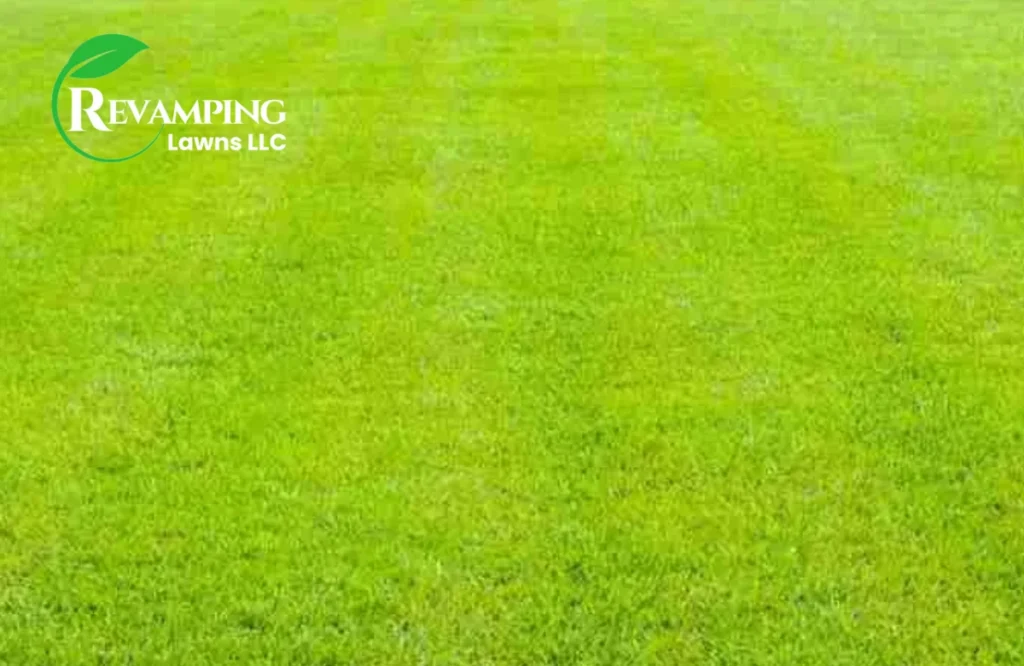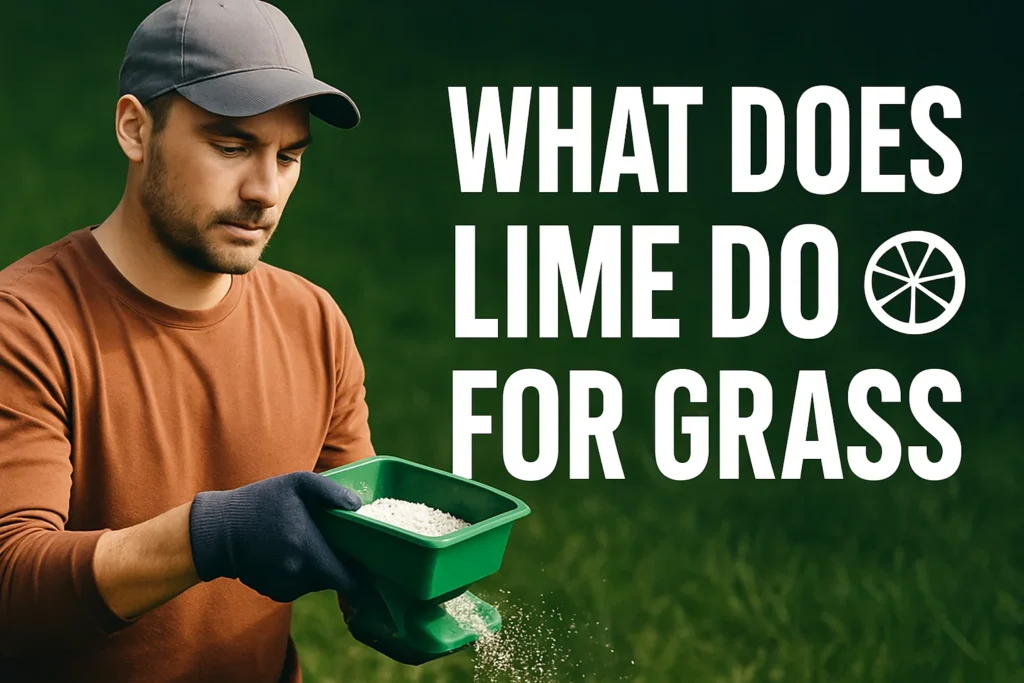A healthy lawn does not only mean watering and mowing it regularly, but also relies heavily on the health of the soil under the grass. Lime is one of the aspects of lawn care that is frequently ignored. Lime assists in the enhancement of soil quality through balancing the acidity and supplying valuable nutrients that are required to make grass grow strong and green. Knowing what lime can do to grass and how to apply it can make a big difference in the wellness and beauty of your grass. This guide will cover the advantages of lime, the various types of lime, and how to use it most effectively.
What is Lawn Lime?
Lime is not a citrus fruit but a mineral that is naturally formed out of ground limestone or marble rock. It is mainly made up of calcium carbonate and occasionally magnesium carbonate. These minerals are very important in regulating the acidity of the soil and adding essential nutrients to your soil.
The pH of soil is a measurement of the acidity or alkalinity of the soil, with 7 as neutral. Most grass
types thrive well in soils that have a pH of 6-7. In case the soil is too acidic (pH is lower than 6), the roots of grass are not able to absorb nutrients, which results in weak, patchy lawns. Lime assists in neutralizing the acidity of the soil, which provides the perfect environment to allow grass to grow.
Types of Lime for Lawns
- Calcitic Lime: This is composed mainly of calcium carbonate and is appropriate in soils that have adequate magnesium.
- Dolomitic Lime: It contains calcium and magnesium carbonate; it is suitable for soils that are low in magnesium.
- Pelletized (Granular) Lime: Simple to use and apply; it is very common.
- Liquid Lime: Rapid spray formula to adjust pH or make a spot treatment.
How Does Lime Benefit Grass?
Lime is a valuable soil supplement that can significantly enhance the health and appearance of your lawn. It is primarily meant to stabilize the pH of the soil, yet it also supplies the soil with necessary nutrients and creates a more favorable environment in which grass can grow. Knowing these advantages will make you understand why lime is usually suggested in lawn care.
Balances Soil pH
The main advantage of lime is that it modifies the pH level of the soil. In case of excessively acidic soil, valuable nutrients are fixed and are not available to the grass roots. Lime addition increases the pH nearer to the neutral range and the nutrients become more accessible to absorption. This gives a healthier soil condition, which enables grass to grow stronger and more vigorously.

Supplies Necessary Nutrients
In addition to maintaining a pH balance, lime provides calcium and magnesium, which are essential nutrients to grass. Calcium helps in maintaining strong cell walls and a strong root system, whereas magnesium is very important in photosynthesis, whereby grass is able to use sunlight to generate energy.
Improves Soil Microbial Action
Lime enhances the development of healthy soil microorganisms, which decompose organic matter and recycle nutrients. These microbes enhance the soil structure and soil fertility, which promotes the health and longevity of the lawn.
Promotes Thatch Breakdown
Thatch is a coating of dead grass and organic debris that may build up on your lawn and suffocate the roots. Lime stimulates microbes to break this accumulation more quickly, preventing disease and enabling water and nutrients to enter the soil more easily.
Improves Fertilizer Efficiency
The pH of the soil is balanced so that fertilizers are more effective. Acidic soils may lower the performance of the fertilizers. However, on correcting the pH with lime, the necessary nutrients contained in the fertilizers are fully absorbed and utilized by the grass.
Enhances Grass Against Stress
Lawns planted on well-limed soils have deeper and stronger root systems. This causes the grass to be more resistant to stress like drought, extreme temperatures and heavy foot traffic, leading to a thicker and healthier lawn.
How and When to Apply Lime to Your Lawn
One of the best methods of enhancing the health of your soil and increasing the growth of your grass is by applying lime to your lawn. However, to achieve the most effective outcomes, it is necessary to use lime properly.
Step 1: Test Your Soil
Before applying lime, test your soil pH and nutrient levels. This will inform you whether your lawn requires lime and the quantity to be used. When lime is applied without testing, it may result in excessive application, and this may damage your lawn.
Step 2: Prepare Your Lawn
Mow the lawn and clear away rubbish. In the case of established lawns, core aeration is used to open areas in the soil so that the lime can go deeper. Do not use lime on wet, dormant or stressed grass.
Step 3: Choose the Right Lime and Method of Application
Lime is either in the form of pellets or powder. Apply lime on your lawn using a drop or rotary spreader. Do not apply lime by hand, which can be uneven and less efficient.
Step 4: Coat Lime evenly and cautiously
To cover evenly, apply half the lime as you walk in one direction (e.g., north-south) and the other half in a direction perpendicular to the first (e.g., east-west). This makes sure that all the lawn gets lime.
Step 5: Follow Recommended Application Rates
When your soil test suggests less than 50 pounds of lime to 1,000 square feet, then apply it immediately in the spring or fall. In larger quantities, divide the application into spring and fall to prevent over-liming. Apply not more than 50 pounds per 1,000 square feet at once.
Step 6: Water Your Lawn
Once you have applied lime, sprinkle some water on your lawn so that the lime can be absorbed into the soil and not burn the grass blades.
Best Time to Apply Lime
The best periods to use lime are in spring or fall when the grass is growing. Fall applications enable lime to operate during the winter through natural soil freezing and thawing. Do not use lime when the lawn is frozen, snowed, or during hot, dry seasons.
Key Dos and Don’ts for Lime Lawn Care
| Dos | Don’ts |
| Test your soil’s pH before applying lime | Do not apply lime without testing the soil |
| Apply lime when the soil is moist but not waterlogged | Avoid applying lime to dry or waterlogged soil |
| Apply lime in the fall or early spring | Don’t apply lime during extreme heat, drought, or frozen conditions |
| Use a spreader for even application | Avoid uneven application of lime |
| Walk in overlapping criss-cross patterns to apply lime | Don’t spread lime on windy days |
| Water lightly after applying lime | Don’t apply lime to stressed or dormant grass |
| Follow soil test recommendations for the amount | Avoid overapplying lime |
How to Know If Your Lawn Needs Lime: Key Signs
- Grass is turning yellow despite being well watered and fertilised.
- Moss or broadleaf weeds such as clover and dandelions.
- Slow or patchy grass cover.
- Soil that is overgrown with thatch.
- Soil analysis indicates that the soil has a pH of less than 6.0 (acidic soil).
- Lawn does not take fertilizers well.
- Ground conditions that are likely to be acidic, such as clay or sandy soil.
- Areas of heavy rainfall where nutrients are washed away.
Final Thoughts
Lime is a useful addition to your lawn care routine, but not every lawn needs it. The most important thing to determine whether lime is appropriate for your lawn is the pH level of your soil. When your soil is too acidic, it could be enhanced with lime to bring the pH to a neutral level that would allow grass to absorb nutrients better. Your soil should be tested before lime is applied so that you know whether to use lime and the amount to apply. Using lime in the absence of a soil test may create issues, including excessively alkaline soil that may also damage your lawn.
Remember that lime is a slow-acting amendment and it may take months or even years to have all the effects on the pH of your soil. Frequent testing and applying lime as necessary every few years will help keep the lawn balanced and healthy. Finally, lime can be a valuable option in case the soil of your lawn is acidic and the grass is not growing well. However, test first and apply lime sparingly to have a greener and stronger Revamping lawn in the long run.
FAQs
Lime is a natural soil amendment that is prepared from ground limestone. It assists in increasing soil pH by countering acidity to make nutrients more accessible to the grass roots. Lime also contains calcium and magnesium, which are valuable nutrients to maintain healthy lawns.
The best way to conduct a soil test is to determine the pH levels. When the soil is acidic (typically, its pH is less than 6.0), lime may be required. Acidic soil is indicated by yellow grass (chlorosis), low growth and too many weeds or moss.
If your soil is highly acidic, then you might have to put lime every year until your pH is at the right level. Subsequently, lime treatments of 3 to 5 years are likely adequate. Never disregard soil test suggestions.
Yes, lime and fertilizer may be used jointly when necessary. Nevertheless, lime is to be applied depending on the outcomes of the soil tests and the fertilizers are to provide the appropriate nutrients in isolation in order to prevent the occurrence of nutrient imbalances.
The soil may become too alkaline and this may result in nutrient deficiency and poor health of grasses due to overliming. Symptoms are yellowing grass and retarded growth. Sulfur or acidifying agents may be used to restore pH to the normal range in the event of overliming.
Lime is most effective to apply in the fall or early spring when the grass is actively growing. Lime is allowed to work slowly through winter on fall applications. Lime should not be applied in periods of extreme heat, drought or when the lawn is dormant or frozen.
The rates of application are determined by your soil test results. Typically, up to 50 pounds of lime per 1,000 square feet are to be used at a time. The larger sums are to be divided into several applications over seasons or years.



